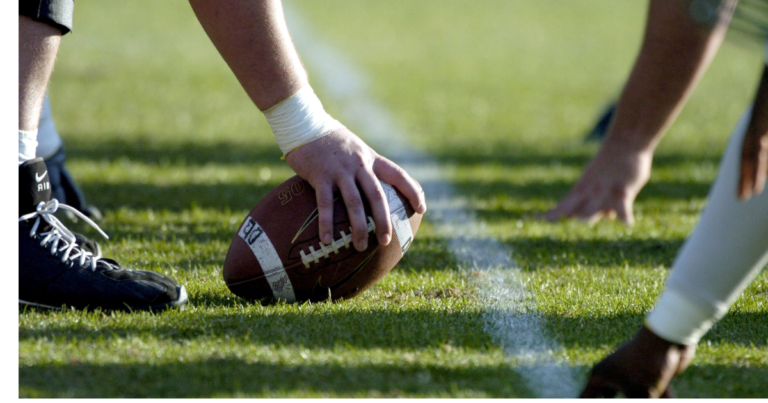How Many Players Are on Offense in Football?
The fast-paced, exciting sport of football keeps spectators on the edge of their seats. The offensive play, in which the team tries to score, is one of the most important parts of the game. Understanding how many players are involved in the offense and how it works is crucial for both newcomers and seasoned fans. The question, “How many players are on offense in football?” will be addressed in this article along with important ideas that will help you to understand offensive tactics.
What Is the Offense in Football?
The offensive team in football is the one that has the ball. The main goal of the offense is to move the ball down the field and score points by making a field goal or a touchdown. They must outmaneuver and outsmart the opposition defense in order to achieve this.
In what is known as the “snap,” the quarterback usually receives the ball from the center to start the offensive play. After that, it’s a string of plays meant to score or gain yardage.
Key Offensive Positions
It’s crucial to understand the various positions that comprise the offensive team before diving into the player count:
- The offense’s leader, the quarterback (QB), is in charge of calling plays, making passes, and passing the ball.
- Running Back (RB): The RB runs with the ball or catches passes while positioned behind the quarterback.
- Wide Receivers (WR): WRs are outside linemen who run routes to intercept quarterback passes.
The offensive line (OL), which consists of the center, guards, and tackles, is responsible for protecting the quarterback and creating space for the running backs.
A versatile player who can play both on the line and as a receiver, a tight end (TE) can block or catch passes.
How Many Players Are on Offense?
Let’s move on to the primary query: How many players are on offense now that we know the key positions?
The average quantity of offensive players
11 players are always on the field for the offense in football. These 11 players are spread out among the various positions that we previously covered.
These 11 players are typically split as follows:
| Position | Number of Players |
| Quarterback (QB) | 1 |
| Running Back (RB) | 1-2 |
| Wide Receiver (WR) | 2-4 |
| Tight End (TE) | 1-2 |
| Offensive Line (OL) | 5 |
This table gives you a general idea of how the offensive lineup is set up, though the precise distribution can change, particularly with formations like the I-formation, single back, or spread offense.
Offensive Formation Breakdown
Players are positioned according to the plan in an offensive formation. The most typical configurations consist of:
- Pro Formation: A well-balanced formation consisting of a fullback or running back, one tight end, and two wide receivers.
- With a shotgun formation, the quarterback has more time to look over the defense because he is positioned farther back from the offensive line.
- I-Formation: The running back and fullback are in a straight line behind the quarterback, who is positioned behind the center.
The amount of running backs, tight ends, and wide receivers on the field may vary slightly depending on these formations, but there are always 11 offensive players overall.
How Has the Number of Offensive Players Changed?
Although the number of players on the field has remained constant, offensive play personnel and strategy have altered over time. Teams are more prone to employ formations in modern football that disperse the defense and increase passing opportunities. As a result, wide receivers and quicker quarterbacks are now used more frequently.
The fundamental rule, however, requires that each team always have 11 players on offensive. A team will be penalized for having too many men on the field if they line up with more than eleven players.
The Impact of the 2024 Rule Changes
The manner offenses are likely to play changed in 2024 in a few ways:
Clock Management Rules: The new regulations aim to shorten the overall game duration and increase the tempo of offensive plays. Now, offensive must move more rapidly since the clock continues to run even after some plays, such as incomplete throws. Teams have been pushed to employ offensive formations that are quicker and more effective as a result.
Targeting and Safety Procedures: As player safety becomes more important, the regulations now require offenses to modify their tackle tactics to lessen head injuries. The increased protection for running backs and quarterbacks has an effect on how offenses approach every play.
Offensive Strategies to Maximize Success
After discussing the number of players on offense, let’s look at some common tactics that teams employ to increase their efficiency.
- The game of passing
One of the main components in current football offenses is the passing game. To move the ball through the air, quarterbacks use a range of routes that tight ends and wide receivers run. The following are some essential passing techniques:
Play Action: A phony handoff intended to trick the defense and extend the quarterback’s throwing time.
A screen pass is a brief, fast pass to a wide receiver or running back that enables blockers to position themselves in front.
Targeting a wide receiver who has outrun the defense, the deep pass is a longer pass downfield.
- The Running Game
Even if passing is becoming more and more common, most offenses still depend heavily on the running game. A strong offensive line and a talented running back are common features of teams that prioritize running the ball. Typical running techniques include:
Inside Zone: A running play that attacks the defensive line by cutting inside.
An outside run is a play in which the running back tries to reach the outside and get yards by using their speed.
A deception tactic known as a counterplay involves rushing in one direction while pretending to be in another.
Conclusion
To sum up, in football, there are always eleven players on offense. The quarterback, running backs, wide receivers, tight ends, and offensive lineman are among the positions occupied by these athletes. These positions’ strategic combination enables teams to produce offensive plays that are surprising and dynamic.
Knowing how many players are on offense is only the first step, as the regulations are always changing and offenses are getting faster. Football victories will always depend on the attacking team’s capacity to carry out astute tactics, both on the ground and in the air. We can anticipate even more thrilling advancements on the offensive end of the ball as the game develops and changes.







